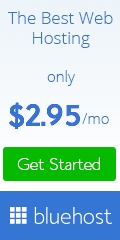Business
Software-Defined Storage: The Answer to High-Availability and Disaster Recovery Challenges
In this article, you will learn more about software-defined storage and how it solves High Availability and Disaster Recovery problems.

Data is everything in today’s world, and losing it can be catastrophic to businesses across all industries. And this is where high availability (HA) and disaster recovery (DR) comes into the picture. High Availability and Disaster Recovery are two critical aspects of IT infrastructures that aim to ensure that mission-critical systems, applications, and data are available and accessible at all times.
While traditional storage solutions have been fruitful in the past, they no longer meet the demands of modern businesses. That’s where software-defined storage (SDS) comes in as an innovative solution to the High Availability and Disaster Recovery challenges.
In this article, you will learn more about software-defined storage and how it solves High Availability and Disaster Recovery problems.
But first things first…….,
1. What is Software Defined Storage?
Before we dive into the main agenda, let’s first understand what Software Defined Storage is and why it is so important.
Software Defined Storage is a new storage technology that’s quickly gaining traction in the market. It’s a software-based, highly flexible storage solution that separates storage software from the underlying hardware, allowing users to create a highly scalable and dynamic storage environment. In SDS, the storage system can be created, configured, and managed through software, providing significant benefits over traditional storage solutions.
2. Why is Software Defined Storage Important?
The primary significance of SDS is that it provides a cost-effective, resilient, and scalable solution for data storage. It eliminates the need for organizations to add physical storage units for every additional byte of data, which can be both cumbersome and expensive. With SDS, businesses can easily scale storage capacity as per their requirements without the need for additional hardware. Moreover, SDS solutions are highly resilient and fault-tolerant, ensuring you never lose data just in case of any hardware failure.
3. The Benefits of Software-Defined Storage for High Availability and Disaster Recovery
Due to its highly flexible and dynamic architecture, SDS has several benefits over traditional storage solutions with respect to High Availability and Disaster Recovery.
4. Cost-effective
SDS solutions are often more cost-effective than traditional storage solutions. That is so because SDS leverages commodity hardware, which is typically less expensive than proprietary hardware. Additionally, Software Defined Storage eliminates some of the more costly components found in traditional storage solutions, such as specialized controllers and hardware-based redundancy schemes. As such, businesses can save significantly on both capital and operational expenditure.
5. High Scalability
SDS solutions have a highly scalable architecture that allows for seamless expansion and contraction of storage capacity. That means that businesses can quickly and easily grow their storage infrastructure to meet the changing demands of their operations. Additionally, SDS solutions allow for the creation of highly available and redundant storage environments, which are critical for keeping mission-critical applications online.
6. Simplified Management
SDS solutions have a centralized management interface, eliminating the need for complex and time-consuming management tasks. With SDS, storage policies and provisioning can be streamlined and automated, thus freeing IT teams to focus on more critical functions. The centralized approach also makes it easier to monitor and troubleshoot storage systems. That is critical for ensuring High Availability and Disaster Recovery.
7. Flexibility
SDS solutions are highly flexible and can support a wide range of storage workloads. That includes traditional block-based storage, file-based storage, and object-based storage. This flexibility enables businesses to deploy the storage solutions that are best suited to their specific needs without being restricted by hardware or software limitations.

8. Disaster Recovery
SDS can play a significant role in DR. SDS-based storage solutions can create copies of data and replicate it across multiple sites or even clouds, providing businesses with multiple recovery points and tiers of data availability. Additionally, SDS can integrate natively with cloud-based DR solutions, making it easier to fall over to a cloud environment just in case of a disaster.
9. How Does Software Defined Storage Helps Address High Availability and Disaster Recovery Problems?
SDS provides a unified platform to manage and protect data, which makes it ideal for implementing high availability (HA) and disaster recovery (DR) solutions. The following are some of the ways SDS helps address HA and DR problems:
10. Replication and Load Balancing
SDS facilitates the replication of data to multiple locations. That enables load balancing and ensures optimum utilization of storage resources. In the case of a hardware failure, the SDS cluster can quickly redirect traffic to the alternate resources available, ensuring high availability.
11. Data Protection and Redundancy
SDS supports various data protection mechanisms, including mirroring, erasure coding, and RAID. These data protection mechanisms ensure data redundancy, which means that in case of hardware failure, data can still be retrieved from other replicas, ensuring there’s not a single point of failure.
12. Data Mobility
SDS facilitates data mobility, enabling data to be moved across different storage platforms without downtime. That ensures business continuity and helps businesses adapt to changing storage requirements without incurring any operational costs.
13. Scalability
SDS allows businesses to scale their storage infrastructure on demand without worrying about the underlying hardware. That ensures easy management and maintenance of storage infrastructure, reducing overhead costs.
14. Centralized Management
SDS allows for centralized management of storage resources, making it easier to maintain and monitor storage resources. That ensures that businesses can quickly identify and resolve any issues, ensuring high availability and disaster recovery.
Conclusion
The importance of High Availability and Disaster Recovery cannot be overstated, especially in today’s world, where data is at the very heart of every business operation. Software Defined Storage is a revolutionary technology that provides businesses with an effective solution to the High Availability and Disaster Recovery challenges they face.
With its cost-effectiveness, scalability, simplified management, flexibility, and DR capabilities, SDS-based storage solutions offer businesses the tools they need to keep their systems and data highly available at all times. Therefore, business owners should begin exploring SDS-based storage solutions to ensure they have a reliable HA and DR strategy in place.
It’s never too late to explore SDS-based storage solutions. So, if you aren’t doing it yet, you can start now and take full advantage of this superb technology.
Business
Tax Filing Advice: Self-employment Tax (IRS Form 1040)
In this post, we’ll show you how to fill out Form 1040 and offer some tips on how to minimize your tax obligations. Tax Filing Advice – Self-employment Tax – IRS Form 1040.

Filing your taxes can be challenging, especially if you are a freelancer. As a freelancer, you are required to pay self-employment tax, maintain track of your revenues and expenses, and submit projected tax payments throughout the year. You can complete an IRS Form 1040 with a little help and a quarterly tax calculator, despite the fact that it could appear challenging. In this post, we’ll show you how to fill out Form 1040 and offer some tips on how to minimize your tax obligations.
Table of Contents
1. Assemble Your Papers
Before you start filling out your Form 1040, you must gather all the necessary information and paperwork. Your W-2s, 1099s for any freelance work you did, receipts for any anticipated tax deductions, and any other financial records you might have are included in this. You must also include your Social Security number and the Social Security numbers of any dependents you wish to claim.
2. Verify Your Filing’s Status
Your file status affects your tax rate and the size of your standard deduction. Determine which filing status is appropriate for you based on your marital status, the number of dependents you have, and other factors.
3. Ascertain your income
Your total income for the tax year is what is referred to as your gross income. This includes all forms of income, including wages, salaries, tips, and revenue from side jobs. Add up your income for the tax year and gather all of your supporting papers. List all of your sources of income from contract work.
4. Remove Your Modifications
By deducting adjustments from your gross income, you can reduce your taxable income. They also pay your health insurance premiums, student loan interest, and IRA contributions if you work for yourself.
5. Choose Your Tax Savings
By taking some expenses out of your taxable income, you can reduce it. The two distinct types of tax deductions are standard and itemized. The standard deduction is an agreed-upon sum of money that is available to all tax filers. As itemized deductions, you are allowed to deduct some costs like state and local taxes, charity giving, and mortgage interest. It is better to select the tax deduction that would result in the greatest financial savings.
6. In Step Six, determine your taxable income.
After subtracting either your standard deduction or your itemized deduction from your AGI, your taxable income will be determined. According to federal law, this amount is your taxable income.
7. Choose Your Tax Credits
They are made up of education, earned income, and child tax credits. To reduce your tax obligation, find out which tax credits you are eligible for.
8. Find Out How Much Tax You Owe
Your overall tax liabilities, less any payments or credits, are referred to as your tax burden.

9. Verify Your Upcoming Tax Payments
If you are self-employed, you must make estimated tax payments throughout the year. Check your expected tax payments throughout the year to ensure you made the required amount to avoid underpayment penalties.
10. Finishing Schedule C
Schedule C, the relevant form, is used to report your self-employment earnings and expenses. To calculate your self-employment tax, which is based on your net self-employment income, use Schedule C. In addition to this, you will also owe regular income tax.
11. Add Up Your Credits and Payments
Add all of your year-end payments, such as estimated tax payments and any taxes you have withheld from your pay. If you qualify, take a deduction for any tax credits. Here, your overall payments and credits will be displayed.
12. Figure out whether you owe a refund or are due one.
You should evaluate your entire tax burden in relation to your total payments and credits. If your tax due is greater than the sum of your payments and credits, you will be obliged to pay extra tax.
13. Upload Your Return
When you’ve finished filling out Form 1040 and any necessary attachments, sign and date your return, and then send it to the relevant IRS address. Make sure to keep a copy of your return and any supporting documents for your keeping.
14. Tips on How to Cut Your Taxes as Much as Possible
Now that you know how, let’s speak about how to complete Form 1040 so that you may maximize your tax savings as a freelancer.
Using tax deductions is a smart move.
As a freelancer, you might be eligible to write off a range of expenses from your taxes, such as business travel, office supplies, and office equipment. Keep note of all your expenses throughout the year in order to maximize any relevant deductions.
Submit projected tax payments
As was previously stated, self-employed individuals are obligated to make projected tax payments throughout the year. This allows you to keep track of your tax obligations and prevent underpayment fines.
You May Want To Add
The ability to deduct more business expenses and a lower tax rate on self-employment income are just two of the additional tax benefits that incorporating your freelancing business may offer. Speak with a tax professional if you’re unsure if incorporation is the right option for you.
Employ tax-favored retirement accounts.
You may be able to reduce your taxable income and increase your tax savings by contributing to tax-advantaged retirement plans like an IRA or Solo 401(k). Use these accounts if you meet the requirements.
Conclusion
Although filling out a Form 1040 can be intimidating, with a little planning and assistance, it is actually rather easy. Even though you may face certain challenges as a freelancer when attempting to maximize your tax savings, there are a number of strategies you may employ to help minimize your tax burden. By taking advantage of tax deductions, paying expected taxes, considering incorporation, and using tax-advantaged retirement plans, you may keep more of your hard-earned money in your pocket.
-

 Instagram2 years ago
Instagram2 years agoBuy IG likes and buy organic Instagram followers: where to buy them and how?
-

 Instagram2 years ago
Instagram2 years ago100% Genuine Instagram Followers & Likes with Guaranteed Tool
-

 Business4 years ago
Business4 years ago7 Must Have Digital Marketing Tools For Your Small Businesses
-

 Instagram3 years ago
Instagram3 years agoInstagram Followers And Likes – Online Social Media Platform
















